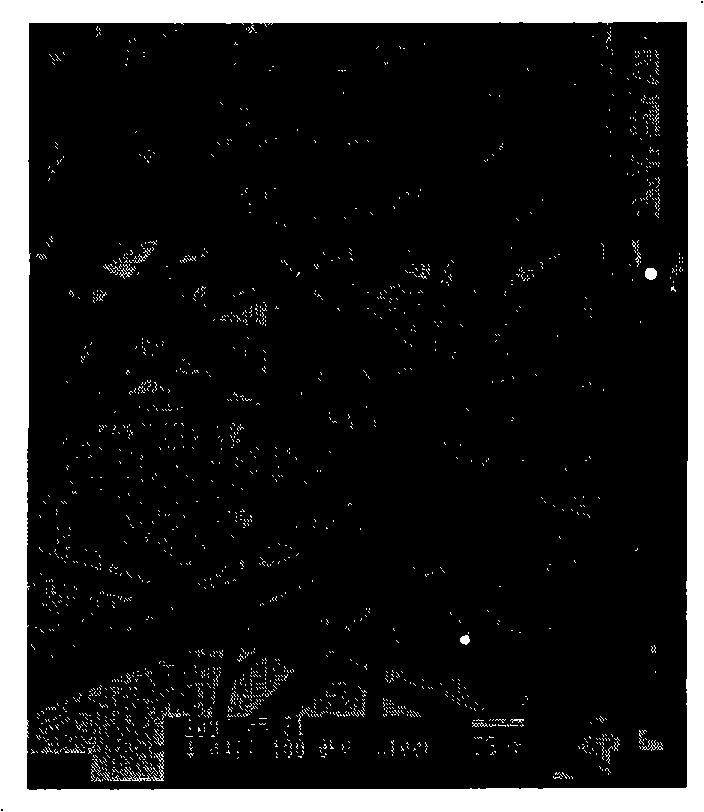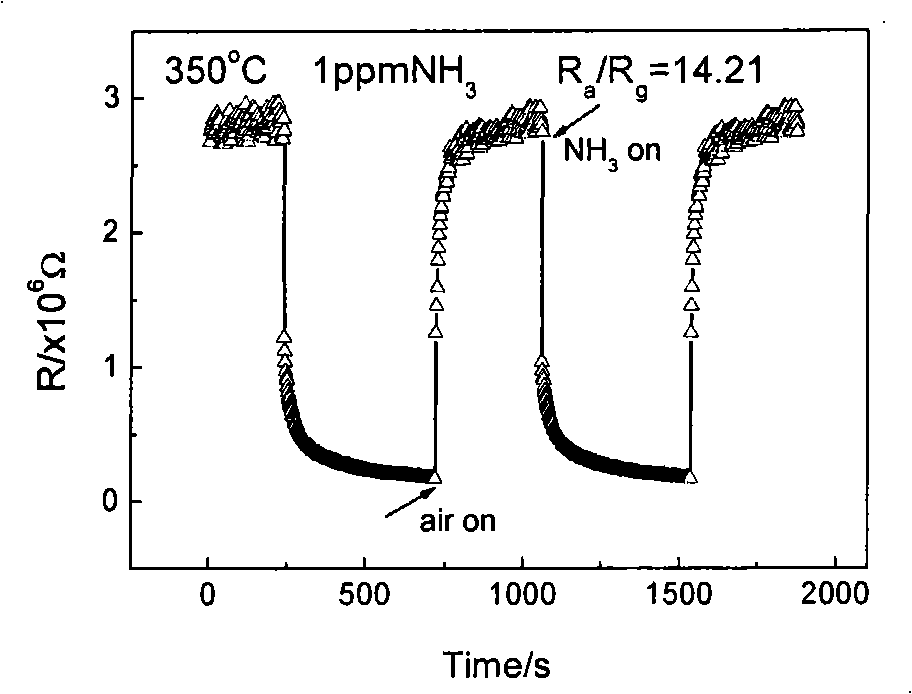Tungstic oxide nano-wire and method for preparing tungstic oxide nano-wire ammonia sensitive sensor
A technology of tungsten oxide nanowires and sensors, which is applied in the field of gas sensors, can solve the problems of unsatisfactory sensor sensitivity and selectivity, complex preparation process of tungsten oxide nanowires, high temperature treatment of precursors, etc., and achieve easy control of process parameters, The effect of high stability and high sensitivity
- Summary
- Abstract
- Description
- Claims
- Application Information
AI Technical Summary
Problems solved by technology
Method used
Image
Examples
preparation example Construction
[0027] 1. Preparation of tungsten oxide nanowire gas-sensing materials
[0028] The preparation process of the tungsten oxide nanowire gas-sensing material is the same as that described in the summary of the invention. Table 1 shows eight specific implementation examples of preparing tungsten oxide nanowire gas-sensing materials in the present invention. Wherein, the transmission electron microscope analysis result of the tungsten oxide nanowire gas-sensitive material prepared by embodiment 6 is as follows: figure 1 shown.
[0029] Table 1 prepares specific examples of tungsten oxide nanowire gas-sensitive materials
[0030]
[0031] 2. Preparation of tungsten oxide nanowire ammonia sensor
[0032] The preparation process of the tungsten oxide nanowire ammonia-sensitive sensor is the same as that described in the summary of the invention. Table 2 shows six specific implementation examples of preparing tungsten oxide nanowire ammonia-sensitive sensors here.
[0033] Tab...
PUM
 Login to View More
Login to View More Abstract
Description
Claims
Application Information
 Login to View More
Login to View More - R&D
- Intellectual Property
- Life Sciences
- Materials
- Tech Scout
- Unparalleled Data Quality
- Higher Quality Content
- 60% Fewer Hallucinations
Browse by: Latest US Patents, China's latest patents, Technical Efficacy Thesaurus, Application Domain, Technology Topic, Popular Technical Reports.
© 2025 PatSnap. All rights reserved.Legal|Privacy policy|Modern Slavery Act Transparency Statement|Sitemap|About US| Contact US: help@patsnap.com



